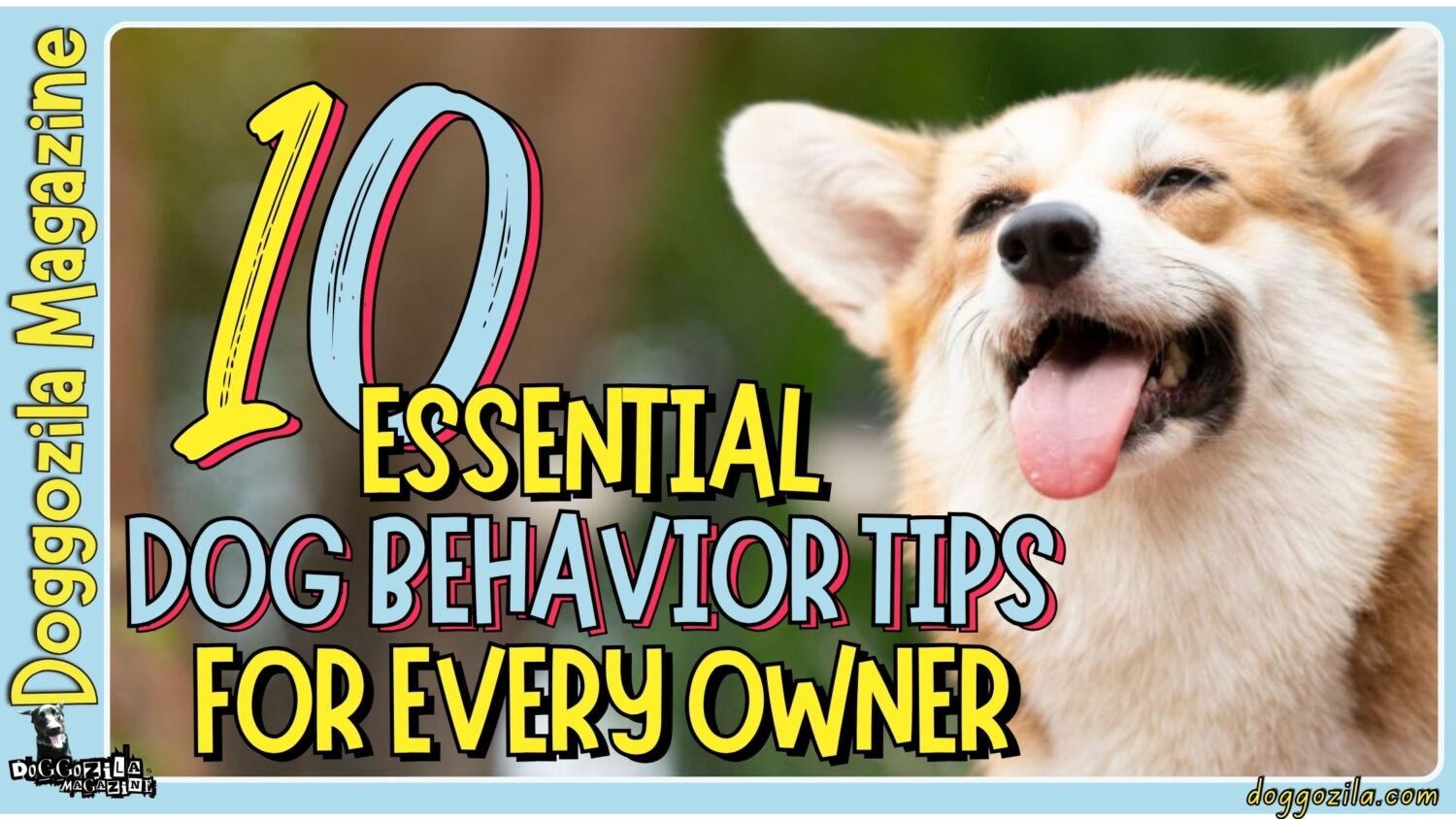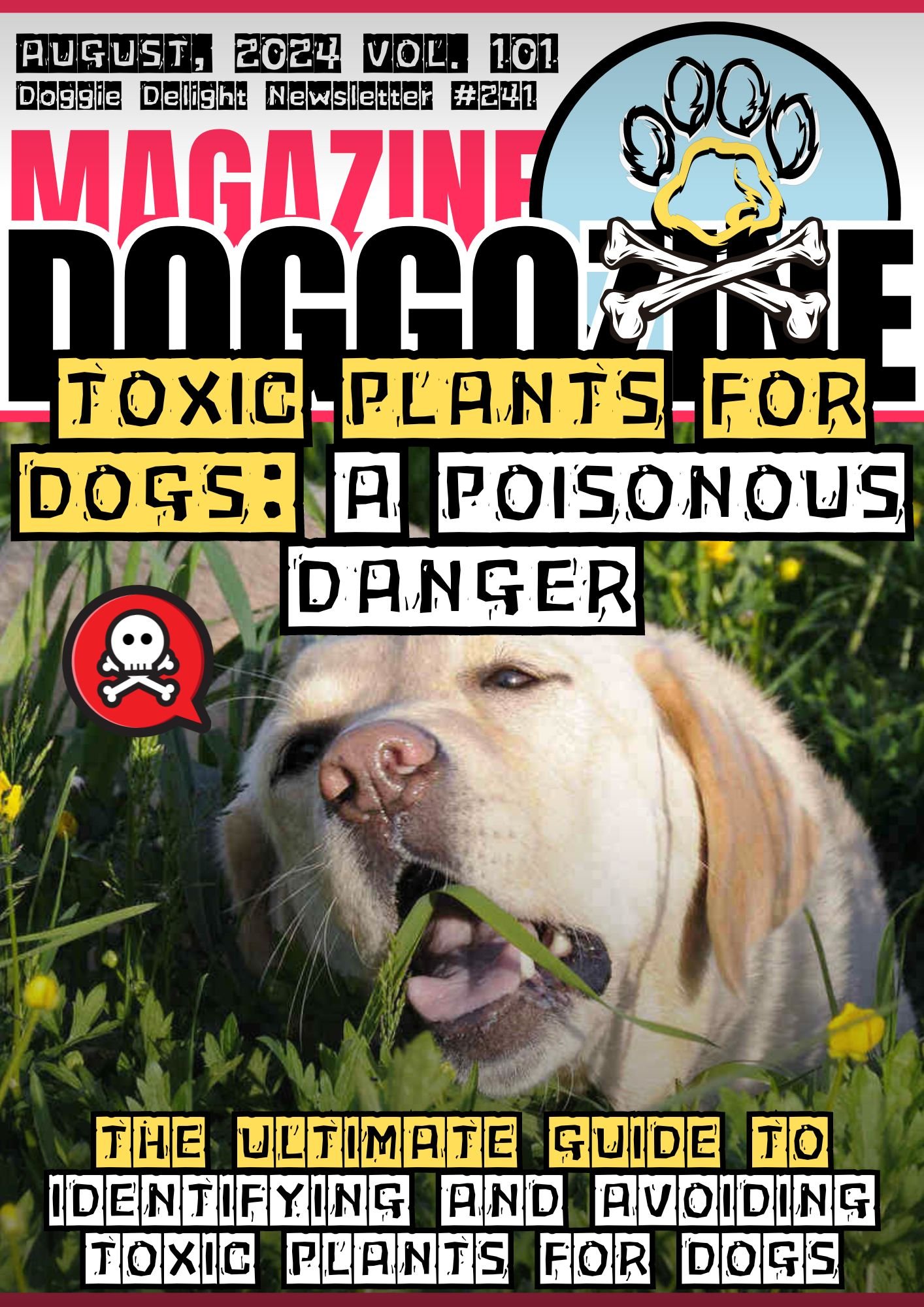
THE ULTIMATE GUIDE TO IDENTIFYING AND AVOIDING TOXIC PLANTS FOR DOGS
Are you a vigilant pet parent concerned about keeping your furry friend safe from potential dangers lurking in your home and garden? The well-being of your beloved canine companion is undoubtedly a top priority, and being aware of the toxic plants that could pose a risk to your dogs is crucial.
Protect Your Pooch from Toxic Plants
In this comprehensive guide, we’ll delve into the world of plant toxicity, empowering you with the knowledge to identify and steer clear of hazardous plants for dogs. From the infamous Sago Palm to the delicate yet deadly Lily of the Valley, we’ll explore the characteristics of common landscaping plants that could harm your pup.
Recognizing the symptoms of plant toxicity, understanding the immediate response needed in case of ingestion, and discovering safe plant swap alternatives are just the beginning. With insights from veterinary experts and practical advice on pet-proofing your living spaces, we’ll equip you with the tools to create a pet-safe environment without compromising on aesthetics.
Stay tuned as we unravel the hidden risks of indoor and outdoor plants, educate dog owners on plant safety, and provide first aid tips in case of emergencies. Let’s embark on a journey towards safeguarding your pooch from toxic plants and nurturing a thriving, pet-friendly living space together.
Identification Of Poisonous Plants
Many common landscaping plants, such as lilies of the valley and sago palms, can be incredibly toxic to our furry friends. These poisonous plants may look beautiful, but their beauty masks a potentially deadly threat to dogs. It’s crucial for pet owners to be aware of the most common and dangerous poisonous plants.
Some of the most toxic include:
- Sago Palm: This newly planted flower bulb is a popular choice for its lush, tropical appearance. However, all parts of the plant are poisonous to dogs, with the seeds being the most toxic.
- Lily of the Valley: The delicate, bell-shaped flowers of this plant may be charming, but they contain cardiac glycosides that can cause serious heart problems in dogs.
- Oleander: This flowering plant’s beauty masks its highly toxic nature. Ingesting any part of the plant can lead to severe symptoms and even death.
Other common poisonous plants include autumn crocus, Japanese yew, and tulips. It’s essential to research any new plants before bringing them into your home or garden.
🔑 Key Points: Many popular landscaping plants, such as sago palms and lilies of the valley, are highly toxic to dogs and can cause severe symptoms or even death if ingested.
Recognizing Symptoms of Toxicity in Dogs
Knowing the signs of plant poisoning in dogs is crucial for pet owners. The most common symptoms include vomiting, diarrhea, and lethargy. However, depending on the type of plant ingested, other severe symptoms may occur.
- Cardiac Symptoms: Plants like lily of the valley contain cardiac glycosides that can cause heart problems. Symptoms may include an irregular heart rate, low blood pressure, and difficulty breathing.
- Gastrointestinal Issues: Many toxic plants cause upset stomach, severe vomiting, and diarrhea in dogs. This can lead to dehydration and electrolyte imbalances if left untreated.
- Neurological Signs: Some poisonous plants can affect the nervous system, causing symptoms like tremors, seizures, or even coma.
- Liver and Kidney Damage: Certain plants, such as sago palms, can cause liver failure in dogs. Symptoms may include jaundice, loss of appetite, and abdominal pain. Other plants may cause kidney damage, leading to increased thirst and urination.
If you suspect your dog has ingested a toxic plant, watch for any of these symptoms and contact your veterinarian immediately. Prompt treatment can make a significant difference in your pet’s recovery.
🔑 Key Points: Recognizing the symptoms of plant toxicity in dogs, such as vomiting, heart problems, and liver damage, is essential for prompt treatment and better recovery chances.
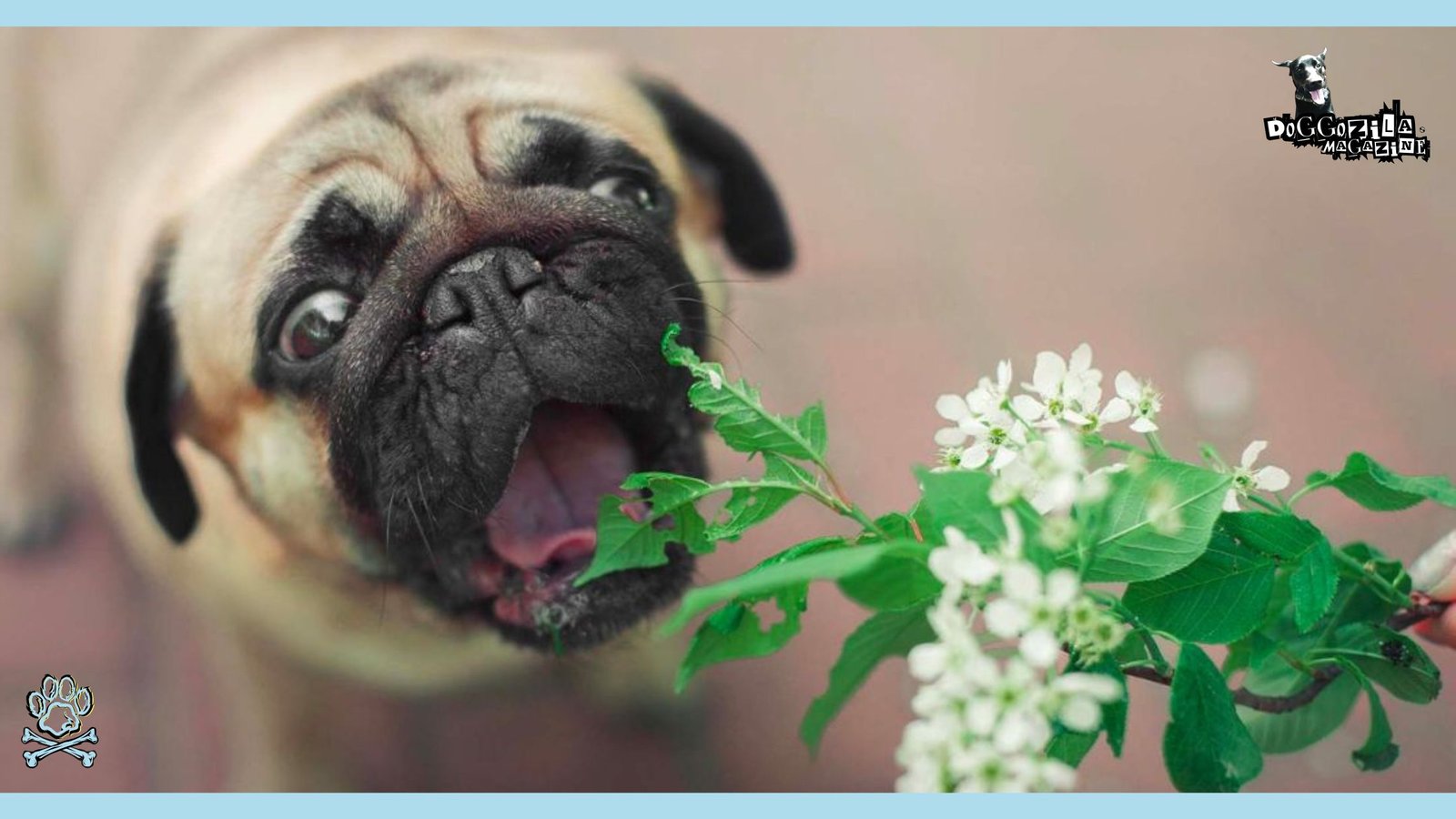
IMMEDIATE RESPONSE TO POISON PLANT INGESTION
If you suspect your dog has ingested a poisonous plant, immediate action is crucial. The first step is to contact your veterinarian or the ASPCA Animal Poison Control Center for guidance. Provide them with as much information as possible, including the type of plant, the amount ingested, and when it happened. They will advise you on the best course of action based on the plant’s toxicity and your dog’s symptoms.
Inducing Vomiting under Professional Guidance
In some cases, inducing vomiting may be recommended to prevent further absorption of the toxins. However, this should only be done under the guidance of a professional, as it can be dangerous in certain situations.
If your dog is showing severe symptoms, such as difficulty breathing or seizures, immediate veterinary care is essential. Plants like lily of the valley can cause heart glycoside toxicity, which requires prompt treatment to prevent serious complications.
Remember, getting help quickly can make a significant difference in your dog’s recovery. Don’t wait to see if symptoms improve on their own, as some plant toxins can cause rapid and severe damage.
🔑 Key Points: Swift action, including contacting a veterinarian or poison control center and seeking immediate veterinary care for severe symptoms, is vital when responding to a dog’s ingestion of a toxic plant.
Understanding Plant Toxicity
To keep our dogs safe, it’s important to understand what makes a plant toxic and which parts of the plant pose the greatest risk. Plant toxicity can vary depending on the species, with some plants being more dangerous than others. In many cases, all parts of the plant can be toxic, including the leaves, stems, flowers, and seeds.
However, some plants may have higher concentrations of toxins in specific parts, such as the bulbs or berries. It’s also crucial to recognize that even non-toxic plants can cause problems if ingested in large quantities. For example, a dog eating a large amount of grass may experience an upset stomach or vomiting.
When assessing the potential danger of a plant, consider its toxicity level and the likelihood of your dog encountering it. A delicate flower in a hanging basket may be less of a concern than a bushy shrub at ground level. Remember, just because a plant is common or beautiful doesn’t mean it’s safe for your pet. Many popular landscaping plants, like sago palms and lilies of the valley, can be highly toxic to dogs.
🔑 Key Points: Understanding which parts of a plant are toxic, the toxicity levels of different species, and the likelihood of a dog’s exposure is key to assessing and managing the potential dangers plants pose to pets.

SAFE PLANT SWAPS: PET-FRIENDLY ALTERNATIVES
Creating a lush green living space that’s safe for your canine companion is possible with the right plant choices. When selecting pet-friendly plants, look for options that are non-toxic and sturdy enough to withstand a curious dog’s nibbles.
Some Great Pet-Safe Plant Options
- Spider Plant: These resilient plants are not only non-toxic but also help purify the air in your home.
- African Violet: With proper care, these compact flowering plants can thrive indoors, adding a pop of color without the risk.
- Bamboo Palm: This lush, tropical plant is a safe alternative to the highly toxic sago palm.
When planning your garden, consider using raised beds or fencing to keep your dog away from any potentially harmful plants. You can also opt for pet-friendly mulches, such as untreated wood chips, instead of cocoa bean mulch, which can be toxic if ingested.
Remember, while it’s essential to choose pet-safe plants, it’s equally important to provide your dog with appropriate toys and activities to discourage them from chewing on plants. Offering a balanced diet and plenty of exercise can also help curb destructive chewing behaviors.
🔑 Key Points: Opting for pet-friendly plants like spider plants, African violets, and bamboo palms, along with strategic garden design and providing appropriate dog toys and activities, can help create a safe and enjoyable living space for both you and your canine companion.
The Role of ASPCA in Pet Poisoning Prevention from Toxic Plants
The ASPCA Animal Poison Control Center plays a crucial role in promoting pet safety and providing resources for pet owners. They offer a 24/7 hotline for pet poison-related emergencies, staffed by trained experts who can provide life-saving advice.
In addition to their emergency services, the ASPCA actively works to educate pet owners about potential toxins in the home and garden. They provide comprehensive lists of toxic and non-toxic plants, as well as information on other common household hazards.
Through their advocacy efforts, the ASPCA aims to raise awareness about pet poisoning prevention and promote safer practices among pet owners, manufacturers, and policymakers. They also support research into pet toxicology and work to develop better treatments for poisoned animals. By utilizing the resources provided by the ASPCA and staying informed about potential toxins, pet owners can take a proactive approach to keeping their furry friends safe.
🔑 Key Points: The ASPCA Animal Poison Control Center is an invaluable resource for pet owners, offering emergency advice, education, and advocacy to promote pet safety and prevent pet poisoning incidents.
Veterinary Insights On Common Toxic Plants And Their Effects
Veterinarians, such as those at Bond Vet, are well-versed in the dangers posed by common toxic plants. Dr. Stern, a veterinarian at Bond Vet, emphasizes the importance of being aware of the plants in your home and garden and their potential effects on your pet.
According to Dr. Stern, some of the most common and dangerous plants include lilies of the valley, which can cause heart problems, and sago palms, which can lead to liver damage. He also notes that even small exposures to these plants can cause severe symptoms in dogs.
Dr. Hohenhaus, another veterinarian at Bond Vet, points out that the severity of a dog’s reaction to a toxic plant can vary depending on factors such as the amount ingested and the dog’s size and health. However, she stresses that any exposure should be taken seriously and that immediate action is crucial.
Both veterinarians advise pet owners to familiarize themselves with the signs of plant toxicity, such as vomiting, diarrhea, and difficulty breathing. They also recommend having the ASPCA Animal Poison Control Center’s number readily available in case of an emergency. By staying informed and working closely with their veterinarians, pet owners can significantly reduce the risk of plant poisoning in their dogs and ensure prompt treatment if an incident occurs.
🔑 Key Points: Veterinarians stress the importance of being aware of common toxic plants, recognizing symptoms of plant poisoning, and taking immediate action to prevent serious health consequences in dogs.
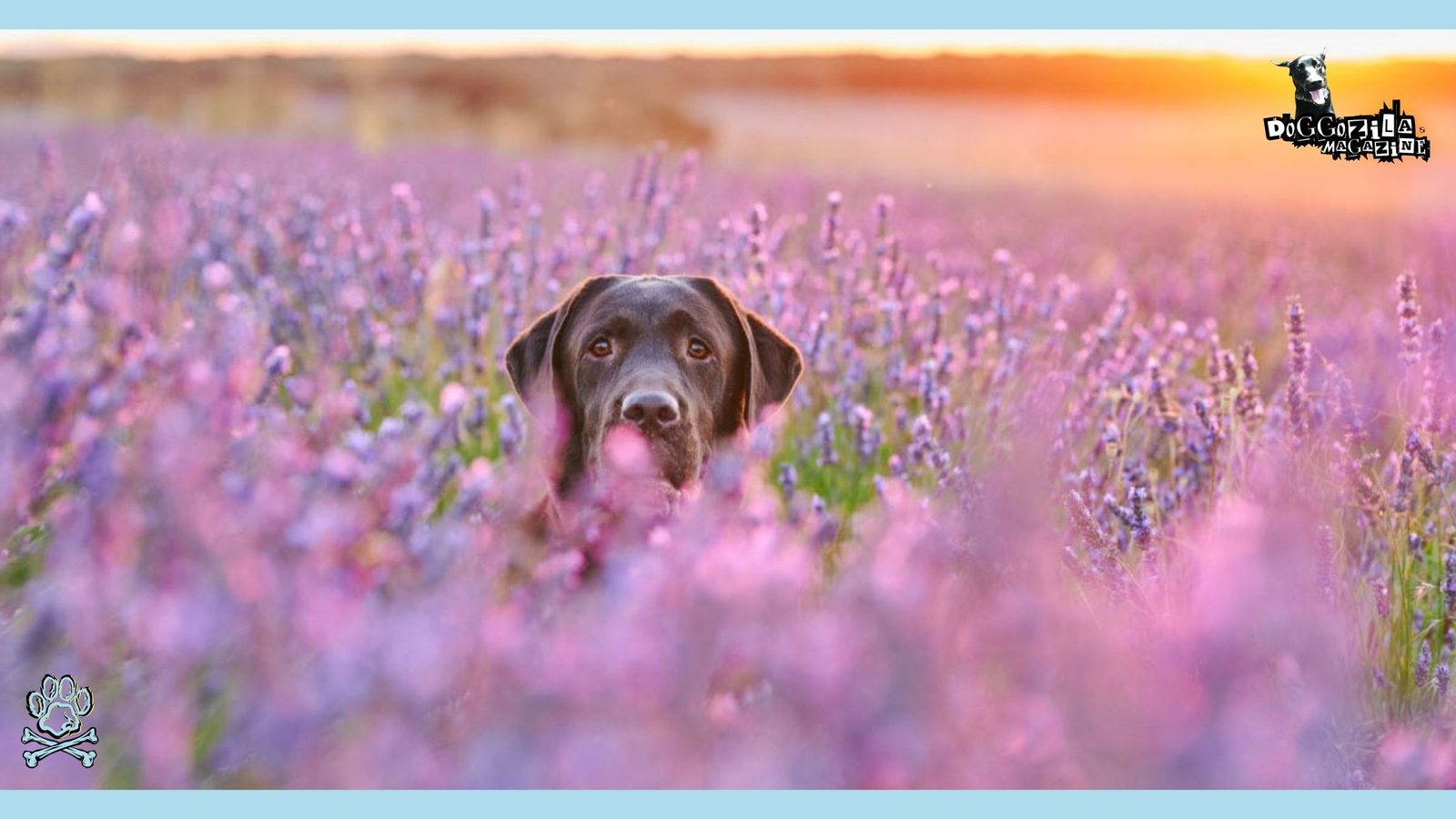
CREATING A SAFE ENVIRONMENT: PET-PROOFING YOUR HOME AND GARDEN FROM TOXIC PLANTS
Pet-proofing your home and garden is essential for keeping your furry friend safe from potential dangers, including toxic plants. Start by assessing your living space and identifying any plants that may pose a risk to your dog.
Indoor Pet-Proofing
For indoor spaces, remove any toxic plants or place them in locations your dog cannot access, such as high shelves or hanging baskets. Consider replacing them with pet-safe alternatives like spider plants or African violets.
Keep an eye out for other indoor threats, such as electrical cords, small objects, and cleaning products, and take steps to secure them or keep them out of your dog’s reach.
Outdoor Safety
In outdoor areas, create designated pet-safe zones using fencing or barriers to prevent your dog from accessing harmful plants. If you have a garden, consider using raised beds or plant stands to keep toxic plants out of your dog’s reach.
Be mindful of any newly planted flower bulbs or seeds, as these can be especially tempting for curious dogs. Cover them with mesh or use deterrents like citrus peels or pine cones to discourage digging.
Supervision and Training
Supervise your dog when they are in the yard, and train them to respond to commands like “leave it” or “come” to prevent them from investigating potentially dangerous plants.
Remember, pet-proofing is an ongoing process. Regularly assess your home and garden for new potential hazards, and make adjustments as needed to ensure your dog’s safety.
🔑 Key Points: Pet-proofing your home and garden involves identifying and removing toxic plants, creating pet-safe zones, supervising your dog, and using training to prevent access to potential hazards.
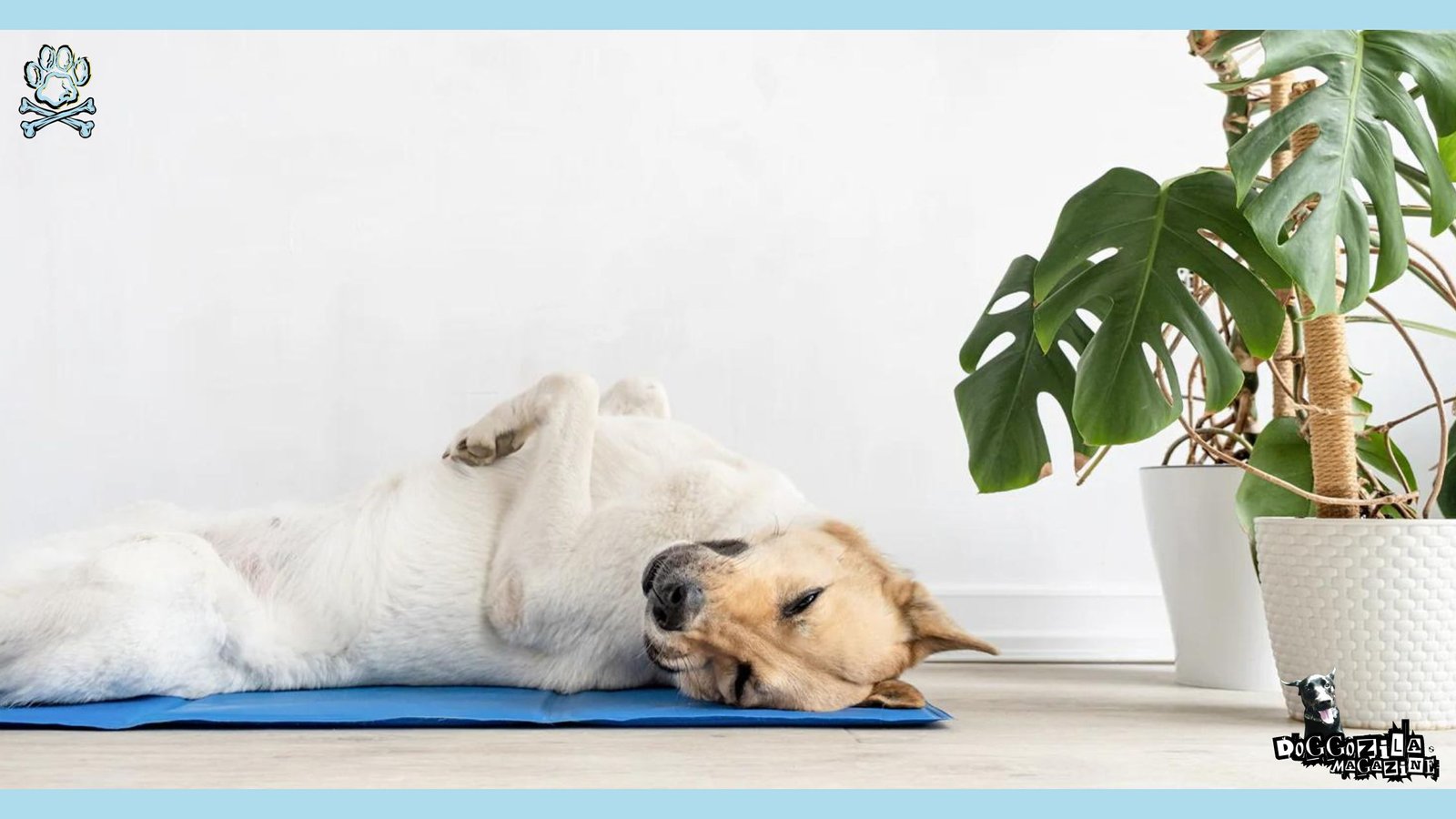
FIRST AID FOR DOGS POISONED BY TOXIC PLANTS
If you suspect your dog has ingested a toxic plant, swift action is crucial. The first step in canine first aid is to remove any remaining plant material from your dog’s mouth and contact your veterinarian or the ASPCA Animal Poison Control Center immediately.
What To Do If Your Dog Eats Toxic Plants
Provide them with information about the plant, the amount ingested, and any symptoms your dog is experiencing, such as vomiting, diarrhea, or excessive drooling. Follow their guidance, which may include inducing vomiting, administering activated charcoal, or bringing your dog in for treatment.
If your dog is showing severe symptoms, such as seizures or difficulty breathing, transport them to the nearest emergency veterinary clinic immediately. Even if your dog only had a small exposure, it’s essential to monitor them closely for any signs of illness and consult with your veterinarian.
Remember, prompt action can make a significant difference in your dog’s recovery and help prevent serious health risks. Always err on the side of caution and seek professional advice when dealing with potential plant poisoning in your furry friend.
🔑 Key Points: In cases of suspected plant poisoning, remove any remaining plant material, contact a veterinarian or poison control center, follow their guidance, and seek immediate emergency care for severe symptoms.
Insights Into Specific Poisonous and Toxic Plants
Understanding the specific dangers posed by different poisonous plants can help pet owners better protect their dogs.
Here are some insights into a few common toxic plants:
- Sago Palm: All parts of this plant are toxic to dogs, with the seeds being the most dangerous. Ingesting sago palm can cause severe liver damage, leading to symptoms like vomiting, diarrhea, and jaundice. Without prompt treatment, sago palm poisoning can be fatal.
- Lily of the Valley: This plant contains cardiac glycosides, which can cause heart problems in dogs. Symptoms may include vomiting, irregular heartbeat, and low blood pressure. Even small exposures can be dangerous, so immediate veterinary care is crucial.
- Autumn Crocus: Often mistaken for the non-toxic spring crocus, the autumn crocus contains colchicine, which can cause severe vomiting, diarrhea, and multi-organ damage in dogs. Ingesting just a small amount can lead to serious complications.
- Japanese Yew: All parts of this evergreen shrub are toxic to dogs, with the leaves and seeds being the most dangerous. Ingesting Japanese yew can cause symptoms like vomiting, difficulty breathing, and tremors, and can be fatal without prompt treatment.
- Tulips: While the leaves and flowers of tulips are only mildly toxic, the bulbs contain higher concentrations of toxins. Ingesting tulip bulbs can cause severe vomiting, diarrhea, and even respiratory depression in dogs.
- Oleander: This common landscaping plant is highly toxic to dogs, with all parts of the plant being dangerous. Ingesting oleander can cause symptoms like vomiting, irregular heartbeat, and even death.
🔑 Key Points: Knowledge of the specific toxins, symptoms, and severity of common poisonous plants like sago palm, lily of the valley, and oleander is essential for targeted prevention and prompt treatment of plant poisoning in dogs.
The Hidden Risks of Indoor Plants to Dogs
While outdoor plants often receive more attention when it comes to pet safety, indoor plants can also pose significant risks to our furry friends. Many common houseplants, such as pothos, philodendron, and dieffenbachia, can be toxic to dogs if ingested.
These plants can cause symptoms ranging from mild oral irritation to severe digestive issues and even organ damage. Some plants, like the sago palm, can be lethal even in small amounts. To create a pet-friendly household, it’s crucial to research the toxicity of any indoor plants you own or plan to acquire. Consider replacing toxic plants with pet-safe alternatives or placing them in locations your dog cannot access.
Dr. Stern from Bond Vet advises pet owners to be mindful of the dangers inside their homes and to take proactive steps to prevent their dogs from encountering toxic plants. This includes keeping plants out of reach, supervising interactions, and promptly removing any fallen leaves or debris. By being aware of the hidden risks posed by indoor plants and taking appropriate precautions, pet owners can create a safer environment for their beloved dogs.
🔑 Key Points: Indoor plants can also be toxic to dogs, and pet owners must be aware of the risks, choose pet-safe alternatives, and take preventive measures to keep their furry friends safe.

EDUCATING DOG OWNERS ON PLANT SAFETY
Education is key to preventing plant poisoning in dogs. By spreading awareness about the dangers of toxic plants and the importance of pet-safe landscaping, we can help more dog owners create secure environments for their furry friends.
How To Reduce The Incidence Of Poisoning from Toxic Plants
Veterinarians, animal welfare organizations, and pet care professionals play a crucial role in providing resources and guidance to dog owners. This can include offering lists of toxic and non-toxic plants, sharing tips for pet-proofing homes and gardens, and demonstrating how to respond to potential poisoning incidents.
Dog owners also have a responsibility to educate themselves about the plants in their surroundings and to take proactive steps to ensure their pet’s safety. This may involve researching plant toxicity, consulting with veterinarians, and making informed choices when selecting plants for their homes and gardens.
By fostering a community of informed and proactive dog owners, we can significantly reduce the incidence of plant poisoning and create safer spaces for our beloved companions.
🔑 Key Points: Educating dog owners about plant toxicity and pet-safe landscaping through the efforts of veterinarians, animal welfare organizations, and proactive pet owners is essential for preventing plant poisoning and creating safer environments for dogs.
Pet-Safe Gardening: How to Cultivate a Safe Outdoor Space
Creating a pet-safe outdoor space requires careful planning and selection of non-toxic plants. When designing your garden, prioritize dog-friendly options like petunias, snapdragons, and marigolds, which add color and visual interest without posing a risk to your furry friend.
Use strategic landscaping techniques to minimize your dog’s access to any potentially harmful plants. This can include using raised beds, installing fencing or barriers around garden areas, and placing larger, sturdier plants along the perimeter to discourage exploration.
A Quick Summary on Toxic Plants and How to Prevent Poisoning in Dogs
Safeguarding your precious pooch from the dangers of toxic plants is a crucial responsibility for every pet owner. By being vigilant and proactive in identifying and avoiding poisonous flora, you can ensure a safe environment for your beloved furry friend.
Understanding the symptoms of toxicity, immediate response protocols, and safe plant swap alternatives are key elements in pet safety and well-being. Educating yourself on plant toxicity, creating pet-proof spaces, and knowing how to administer first aid in case of ingestion are essential steps towards preventing potential health risks.
Remember, by implementing the expert-backed tips and insights shared in this guide, you can significantly minimize the risks and create a pet-friendly living space that promotes your canine companion’s health and happiness. Thank you for taking the time to prioritize your pet’s safety and well-being.
Let’s cultivate a lush green environment that not only beautifies your home but also ensures a safe haven for your cherished four-legged family member.
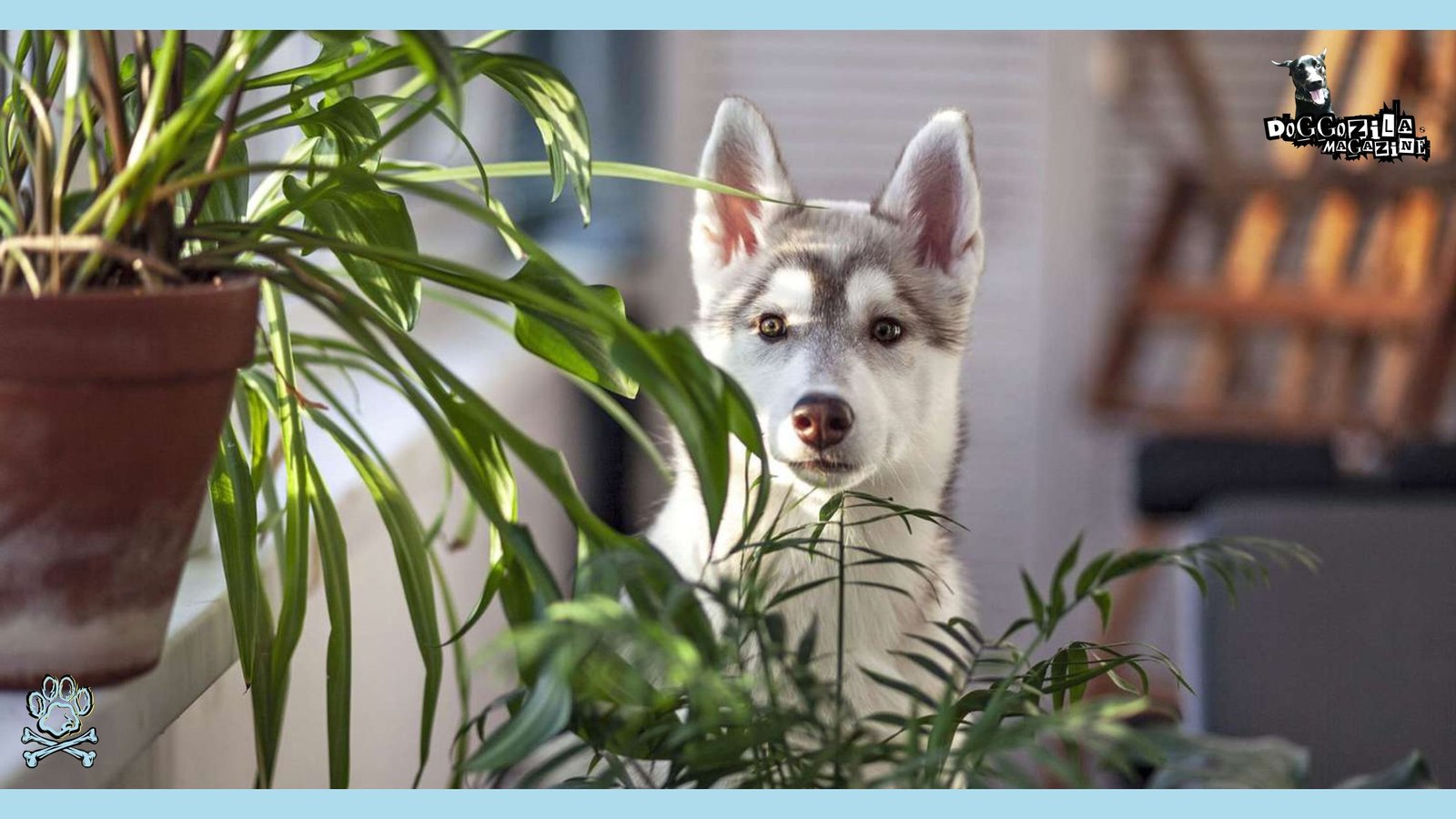
Stay informed, stay proactive, and enjoy a thriving bond with your furry companion in a toxin-free oasis.

